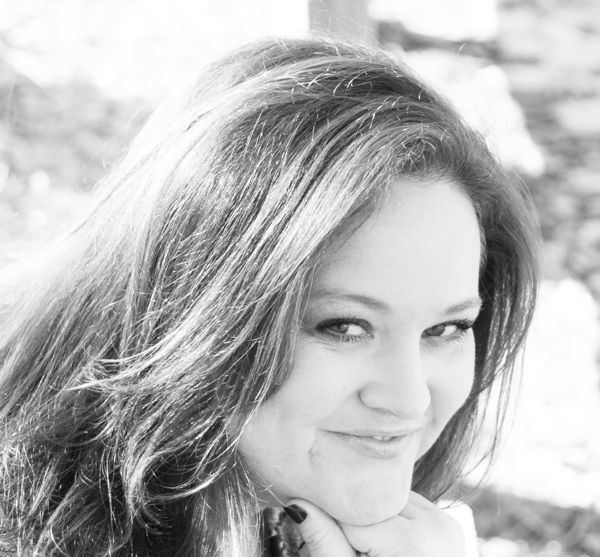An exploration with Cassie Parks

Cassie Parks
Most millionaires have at least 7 different income streams. Have you heard that before? I know I have. I just went down a Google rabbit hole trying to find a definitive source. I found a lot of people who refer to this idea, but I couldn’t figure out who said it first or what they based that claim on. Or exactly what the 7 income streams are. Instead of blindly believing, let’s look at the 7 most common streams of income. If you currently rely on a single paycheck to support yourself, or two paychecks to support your family, you might wonder how to add more income streams to your life. Let’s take a look.
Here are 7 types of income streams:
1. Regular old Earned Income. This is the paycheck you get from a job or the money you earn by providing some kind of service to others. On your tax returns, this is the money that is taxed at your earned income rate or within your tax bracket. This includes side hustles, moonlighting, dog walking, babysitting etc. When you are trading time for money, you are earning income.
2. Taking Profit. If you are the maker of a product, this is the amount of money left over from the sale of your product after all of the cost of goods sold, overhead expenses, and taxes are out. If you run your own business you (hopefully) not only pay yourself a salary from your business (this is the earned income portion) but also are able to take a profit share too.
3. Interest. This is money that your money earns by being loaned out to someone else in some form. When you put your money in a savings account, you loan it to the bank. The bank then loans it out to other people. The bank pays you a low interest rate, then earns a higher interest rate on car loans and mortgages. Back in the days when savings accounts offered decent interest rates, interest income could be significant. These days it is pretty paltry. You also earn interest on Money Market accounts, CDs, Treasury Bonds and personal loans. There are also several peer-to-peer lending platforms where you can earn interest on your money by lending money to people you probably don't know, to be used in specific ways.
4. Dividend Income. There are certain companies that offer dividends for their stockholders. Dividends are a percentage of the company's profits paid to the shareholders at regular intervals, usually quarterly, but sometimes annually. Many of these companies also offer dividend reinvestment plans so you can use the dividends you are earning to buy more shares of the company. Not all companies on the stock market offer dividends.
5. Capital Gains. Capital gains are gains that you make between the time you purchase an asset and sell that asset. For example, if you buy a stock at $10 per share and sell it at $20 per share, your capital gains will be $10 for every share you own. Or if you bought a house for $200k and then sell it for $400k, your capital gains are $200k. When you make money this way you pay capital gains tax on the income.
6. Licensing and Royalties. I'm grouping the two of these together because for each of them you do the work up front and collect income from that work into the future. With licensing you usually either invent something that someone else wants to license or if you are famous others may want to license your image or name. The band Kiss ended up making far more money from licensing their image to merchandisers than they did from their music and tours. However, they do continue to get royalties from sales of their music. When they were on tour, being paid show by show or on a per diem basis was earned income.
7. Rental Income on Investment Property. This comes in residential and commercial varieties. For this kind of income, you have to put the money up front to either purchase property in full or put the down payment on the property and carry a mortgage. If you carry a mortgage, your rental income is what is left over after all expenses including mortgage payments, repairs, management (and other) fees and taxes have all been paid.
I recently had a chance to chat with Cassie Parks, who is an expert at creating and nurturing multiple streams of income. Back when she was still working at her corporate job she saw the opportunity to get into real estate. Her first purchase was a multi-bedroom home in which she rented out rooms to roommates. There came a point when all the roommates moved out and she decided she wanted to downsize for herself. Rather than selling that house and buying a new one, she moved to a small studio apartment and rented the entire house out. This helped her to save up for the down payment on her next real estate property. This was the start of Cassie’s Rental Income stream which she has continued to expand and grow by adding in more rentals as she saves up enough for the down payment on each new one.
Most people see the down payment and complication of real estate transactions as barriers to getting started in this field, so Cassie has a few suggestions. Owner occupying your first property really helps. Buying a duplex and living in half while renting the other half out is one way to get started on the property track. It is easier to get an owner-occupied mortgage than an investment mortgage when you are starting out. Most brokerage companies won’t consider the income from the rental property into your debt to income ratio unless you have already been a landlord for at least a year. If your first purchase is a duplex, then one year later if you want to buy another property as a rental, you will have had that year as a landlord under your belt so future rental income will count in the calculations.
For pulling together the down payment, Cassie suggests that you look at what really makes you happy, spend money on that and cut back on everything else. Also, look around your life for unused capacity. Have a spare room you could rent on AirBnB? Have a car and some spare time? Sign up for Lyft or Uber. Or sign your car up with a car share service. Seel stuff around your home you don’t want or use anymore on Ebay. Pull enough of those things together and in several months to a year you could have enough set aside for your first downpayment.
Being an Amazon author with 7 titles under her belt is another stream of income (royalty income) that Cassie has built up over the past several years. Now this income stream is really starting to pay off. Few people make enough to live off of, or even buy a few beers off of every month, when they have just one amazon book title to their name. But there are plenty of people building up series of books in a genre or who write prescriptive how-to or self development books. Joanna Penn of The Creative Penn and Sean Platt, Johnny B Truant and Dave --- of the Self Publishing Podcast and the Sterling and Stone imprint are some fantastic examples of this exact strategy. And while Cassie admits that at the moment her books aren’t bringing in enough to support her and her lifestyle fully, she has every intention to keep on writing and building both her following and her library book by book and year by year.
Another income stream that Cassie created for herself is her own online coaching business. Because she has been so successful at creating the mindset that has allowed her to overcome the barriers and obstacles that most people see in front of them when they start the journey to build their wealth, this is exactly what she helps others do now too.
You can listen to my entire conversation with Cassie Parks right here. Want to read some of her books? You can start with her best selling title Manifest $10,000: Learn How to Manifest 10,000 by Using the Law of Attraction and Improving Your Money Mindset. And you can learn more about everything Cassie Parks related at her website right here.
